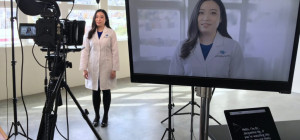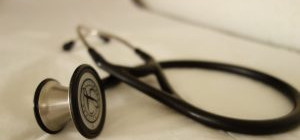Some people take initiative to live a healthy lifestyle and avoid injuries whenever possible. They stay hydrated, stretch before every workout and cool down appropriately. Despite all of the precautions, even the fittest person can experience a serious injury.
All it can take is one misstep to turn an ankle, break a bone or tear a ligament. Anterior cruciate ligament (ACL) injuries are among the most common sports injuries, particularly among female athletes. It’s also one of the most serious knee injuries that require far more than cold compression and rest.
Here’s a look at what the anterior cruciate ligament is, how it can get injuries and treatments for an ACL injury.

The ACL and Injury
The anterior cruciate ligament runs vertically over the knee. One of four ligaments in the knee, the ACL links shin bone to thigh bone.
The ACL can be injured when it’s overexerted or overextended. Sudden impact, quick stops, and starts, pivoting, twisting and turning are actions that can lead to injury. That’s why athletes who play football, tennis, and basketball are at the highest risk of suffering ACL injuries.
An ACL can be pulled or strained and in some cases the ligament tears. When the ligament tears ACL surgery is typically needed.
ACL Surgery Explained
It’s obvious when an ACL tear occurs. You can usually hear it when the ligament goes and the knee will start the swell almost immediately. At this point, the knee is not stable and walking shouldn’t be attempted.
If a complete ACL tear is expected an MRI and physical exam should be done right away. Once the injury is verified your doctor should discuss physical therapy and surgical treatment. Before having ACL surgery it’s best to understand what the procedure entails so you can prepare in advance and know what outcome can be expected.
ACL surgery is an arthroscopic reconstructive surgical procedure. The surgeon takes replacement tissue from another tendon or muscle in the body to reconstruct the ligament. He or she will then make numerous small incisions around the knee.
The surgeon will insert a camera and small instruments to remove the torn ligament and the replacement tissue will be grafted into place. The tissue is secured in place by drilling two holes, one in the bone above the knee and one in the bone below the knee. Screws are then drilled into the holes to keep the tissue graft secure.
Open knee surgery can also be used, but this is more invasive and leads to more scarring. During an open knee surgery, the surgeon makes an incision down the middle of the knee to remove the damaged ligament and put the tissue graft in place.
If the tear is mild or the patient is older physical therapy alone may be recommended. However, most active patients opt for surgery to regain full mobility.
Recovery After ACL Surgery
ACL surgery will only take a few hours, but the recovery process takes a bit longer. Those with a recently operated-on ACL can expect to get back to their favorite activities after a few months, probably anywhere from four to six.
The First Two Weeks
The first two weeks will require plenty of rest to control inflammation paired with specific exercises that can be done in bed. You’ll need to start doing the exercises immediately to regain flexibility, the same day as the surgery if possible. You should avoid putting weight on the injured knee. During this period crutches should be used.
2-6 Weeks
After two weeks you should be able to fully extend the knee, walk without crutches and drive a vehicle. The focus is now put on strengthening the muscles around the knee to provide better support. In addition to using light weights and resistance bands, cardio machines on low-intensity settings should be used regain strength.
6 Weeks to 3 Months
Physical therapy will continue as your strength improves. Therapists will then begin to emphasize coordination and control. At this phase, patients are usually allowed to jog on their own.
4-6 Months
After four months if recovery goes smoothly, many people can return to regular activity including sports. You should have full use of the knee with no associated pain, however, it could take an additional two months of physical therapy to reach this point.







